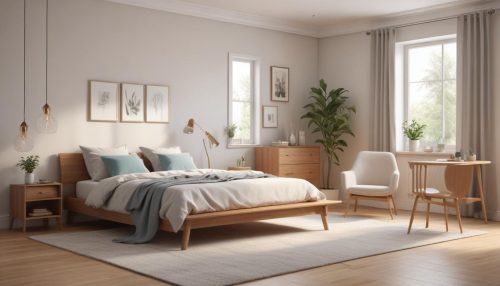Why Routines Should Be Flexible to Foster Innovation
Emma Brooks July 2, 2025
We all have morning rituals, work processes, and evening habits. These routines streamline daily life—but when they’re too rigid, they can stifle creativity. To foster innovation, routines should be flexible to foster innovation, blending structure with adaptability to enable fresh thinking, problem-solving, and growth.
Here’s how flexible routines are becoming a hot trend in wellness and productivity, and how you can apply them to your life.

The Innovation Paradox: Structure vs. Stagnation
Routines offer stability, reducing decision fatigue. Yet inflexible routines can create blind spots. Adaptive routines—ones that shift based on context—encourage exploration without chaos.
Research shows combining spontaneous and deliberate thinking enhances innovation. Cognitive flexibility, fostered by adaptable routines, boosts problem-solving and creative insight.
Trend #1: Hybrid Work is Redefining Routine Flexibility
Hybrid work isn’t just about location—it’s about rhythm. The flexible work arrangements (FWA) movement recognizes that autonomy over schedules and space leads to greater innovation.
Studies confirm that when employees control their time and environment, innovation increases by about 20–25%.
A major NCBI meta-analysis found that FWA reduces stress and burnout, and increases knowledge workers’ creative behavior.
Trend #2: Adaptive Routines in Wellness Culture
Products like Meditation+App and movement reminders show wellness is embracing adaptive routines.
Medium’s recent guide on flexible routines highlights how adaptable schedules reduce burnout and enhance creativity by allowing breaks aligned with energy levels.
It’s the concept behind power routines—structured enough for consistency, flexible enough to allow spontaneous inspiration.
Why Flexible Routines Enable Innovation
1. They Promote Cognitive Flexibility
Switching between fixed and dynamic tasks prevents mental rigidity. This aligns with research on dynamic capabilities, which emphasizes that routines should evolve to meet changing environments.
2. They Balance Routine and Novelty
Allowing a routine “wiggle room”—like shifting meeting times or changing your work spot—lets you break monotony without losing flow.
3. They Build Resilience
Adapting routines for unexpected obstacles develops agile thinking. Forbes reports flexible cultures thrive because they empower diverse responses, boosting innovative mindsets .
Step-by-Step Guide to Building Flexible Routines
Step 1: Identify Your Core Anchor
Determine your non-negotiable routines—like work hours, gym, or bedtime.
Step 2: Introduce Flex Slots
Add 1–2 flexible blocks daily for:
- Creative exploration (writing, brainstorming)
- Movement or mindfulness aligned with energy
Step 3: Allow Shifts
Permit schedule shifts. Example: If focus is low in the morning, swap deep work to midday.
Step 4: Track Outcomes
Keep a journal noting when interruptions led to breakthroughs.
Step 5: Refresh Monthly
At month’s end, reflect on which flexible slots generated new ideas—and refine your routine accordingly.
Real-World Examples
- Google and 3M pioneered the “15% time” model, giving employees space to pursue passion projects outside standard workflows.
- Startups with asynchronous workflows see higher ideation rates due to adaptive collaboration tools .
- Knowledge-based firms adopting FWA report lower stress, greater creative output, and 25% more innovative proposals.
Common Misconceptions About Flexible Routines
| Myth | Truth |
|---|---|
| Rigid routines = discipline | Flexibility within routine builds sustainable discipline |
| No routine = creativity chaos | Structure with planned flexibility improves freedom |
| Flex time = laziness | Adaptive intervals stimulate insight and reduce burnout |
Pitfalls & How to Avoid Them
- Over-flexibility: Too much unpredictability can ruin flow. Stick to core anchors.
- Lack of boundaries: Use tools like Do Not Disturb during focus.
- Skipping reflection: Monitor what works via periodic reviews.
Why This Matters in 2025
- Labor trends emphasize autonomy, mental health, and resilience.
- Artificial intelligence adoption demands human flexibility to solve novel problems.
- Hybrid environments require routines that bridge home and office life without cognitive drain.
Adaptive routines are no longer fringe—they’re becoming the foundation for wellness and innovation.
Final Thoughts
In a time when rigid routines can feel outdated, routines should be flexible to foster innovation. Blending structure with adaptability nurtures cognitive flexibility, creativity, and resilience.
Start now: anchor your key habits, add flexible creative time, reflect regularly, and evolve based on what sparks your ideas. Innovation isn’t random—it lives where routine meets room to explore.
References (with working links)
- NCBI (2023) – Flexible Work Arrangements and Innovation Behavior
Explains how flexible routines in professional settings reduce stress and support creativity.
https://www.ncbi.nlm.nih.gov - World Economic Forum (2022) – Free Thinking Boosts Creativity
Highlights how free-thinking time improves creative output and cognitive performance.
https://www.weforum.org - Medium (2024) – A Superior and Realistic Alternative: Flexible Routines
Offers practical insights into how adjustable routines combat burnout and foster innovation.
https://medium.com





